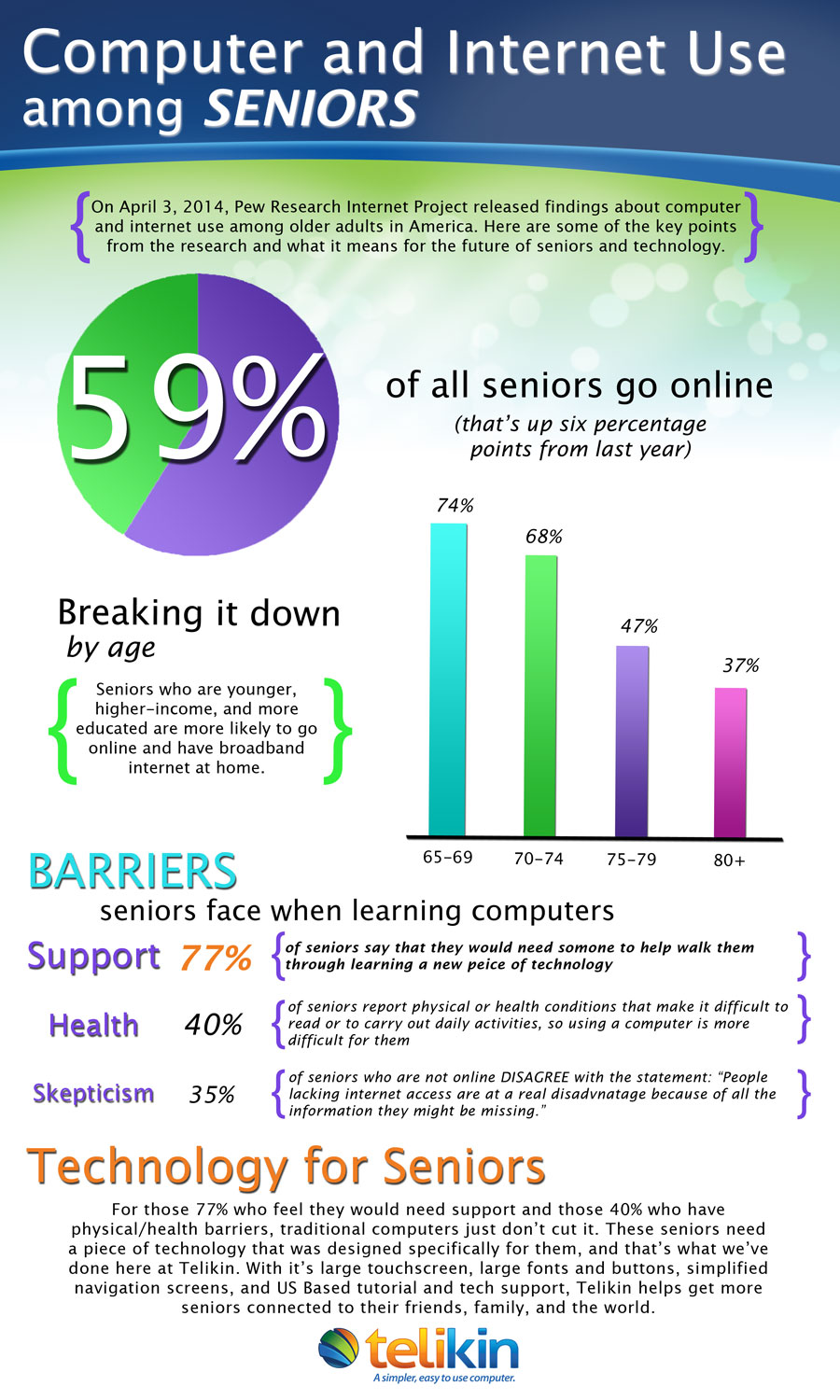Senior Computer and Internet Use
Author: Lauren Allegrezza
The key overall statistic is that now 59% of Americans age 65 or older go online. In last year's report that same number was 53%, which was the first time more than half of seniors went online. This increase in seniors logging on demonstrates the steady, if rather slow, trend for more and more older adults adopting new technologies. As I've written about before, the benefits of technology for seniors are numerous, so it is encouraging to see that more are actually capitalizing on those benefits.
Here are some of the other key findings:

The number of seniors getting online varies by age groups:
65-69: 74%
70-74: 68%
75-79: 47%
80 plus: 37%
Among seniors, those who are younger, higher-income, and higher educated are more likely to hold "technology assets."
There are also some clear barriers for some seniors adopting new technologies:
Support: 77% of seniors say that they would need someone to help walk them through learning a new piece of technology
Health: 40% of seniors report physical or health conditions that make it difficult to read or to carry out daily activities
Skepticism: 35% of seniors who are not online DISAGREE with the statement that people lacking internet access are at a real disadvantage because of all the information they might be missing.
The fact that 77% of seniors feel they would need support in order adopt new technologies is a clear indicator of how we as a society can get more seniors online. Here at Telikin, one of the most critical parts of our operation is providing technical and tutorial support to our customers. The Telikin computer itself was designed specifically for seniors and is much easier than traditional computers for tech-novices to learn, however, one of the major barriers to overcome is the confidence of the user. Many seniors feel as though they CAN'T learn computers - sometimes they had a bad experience in the past, sometimes they are afraid of breaking the computer, but whatever the reason is they need some encouragement and guidance to get them comfortable using the computer.
The other piece of the puzzle is the technology itself. Older adults face physical challenges such as vision and mobility issues that make using traditional computers difficult. If a senior has macular degeneration how could he possibly see whats on the screen of a 10 inch tablet? And for a senior who has severe arthritis in her hands, manipulating a mouse is very difficult. Technology for seniors has to be designed specifically for them as users.
And of course, the last piece is to demonstrate to seniors how they can actually benefit from technology. Everybody uses computers for different reasons, and its the same with seniors. Maybe one gentlemen would love to research new fishing tips, or maybe a grandmother misses her grandchildren who live across the country and would like to see their faces. Whatever their need, once a senior can see how a computer will help them, they are going to be more willing to try it! Many times when we have a new customer call into our support to learn about the computer, the agent will first ask what they were hoping to accomplish, whether it be playing games, online grocery shopping, finding love, or checking on their investments. Then the agent shows the customer which application can help them accomplish that goal.
As the Pew data shows, more and more seniors are adopting technology. And as long as we clearly understand the barriers, we can help even more seniors stay connected to their friends, family, and the world through technology.